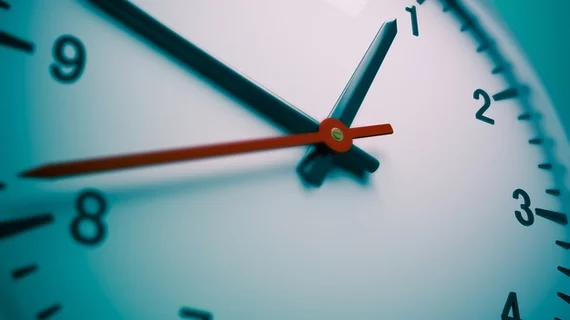New metric captures radiologists’ true reporting time for complex cases, potentially enhancing RVUs
Experts have developed a metric for capturing complexity in lumbar spine MRI that may better predict reporting time and productivity compared to relative value units, according to recently published research.
Efficient interpretation and reporting are key to delivering value in radiology. Yet RVUs have long been used to measures these productivity metrics despite widespread criticisms. This can create deep-seated bias and misaligned incentives, authors wrote in the Journal of Digital Imaging.
They hypothesized more complex studies require additional energy and longer reporting times not captured by RVUs. And this proved true when looking at lumbar spine degenerative disease on MRI.
Using a decade's worth of LMRI reports and natural language processing, the team developed a composite severity score (CSS) independently predictive of interpretation and reporting time.
Michael Travis Caton Jr., MD, with the Department of Radiology and Biomedical Imaging at UCSF, and co-authors say it could complement and even replace RVUs.
“The CSS may be useful as a ‘correction factor’, allowing studies to be weighted based on overall complexity,” Caton Jr. and colleagues wrote, adding it “could then be applied to quality improvement by defining efficiency benchmarks, ensuring equitable distribution of work, and improving existing measures of radiologist productivity (i.e., RVU).”
Quantifying the overall severity of lumbar degenerative disease is the best performance metric for LMRI, the authors noted. So they reviewed some 13,000 exams and a 10-year archive of timestamped reports to calculate an ideal reporting time.
Using an AI tool, Caton Jr. et al. developed a CSS based on the sum of 18 radiologist-assigned stenosis grades, which reflect narrowing along the spine.
Upon controlling for patient sex and age, service location and interpreting radiologist, CSS proved independently predictive of mean reporting time, the authors reported.
The metric was less important than the interpreting radiologist upon multiple regression analysis, the authors noted, which indicates LSDD severity is only one of the many factors influencing efficiency.
Despite this, and a few other limitations, the researchers believe their composite severity score could benefit patients, radiologists and healthcare organizations alike.
“Within a radiology practice, a CSS-weighted RVU could result in more equitable recognition of work, accounting for procedural complexity, a process which has been used to improve performance and quality in pediatrics and surgery,” the group concluded.
Read the entire study here.
Related Radiology RVU content:
VIDEO: The importance of the Physician Practice Information Survey and its impact on radiology reimbursements — Interview with Linda Wilgus, former RBMA president
Radiology should consider ditching RVUs for a time-based productivity metric, study suggests
Radiologists' on-call workloads have more than doubled relative to ED visits
Dashboards Offer an Odometer of Practice Performance
RVUs vs. TVUs: Are Time Value Units a Fairer Way to Measure Productivity?

